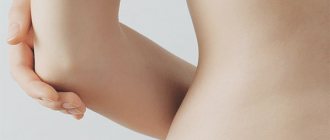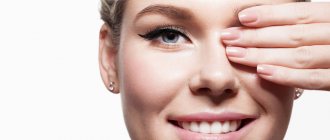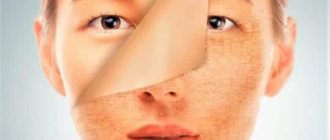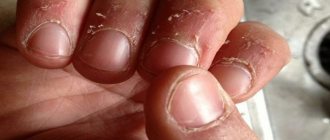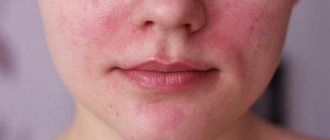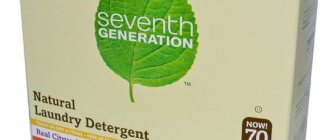Dry skin in a child is a fairly common problem at any age - from 1 year old to 7 or 9 years old. Parents often ask what causes this condition and what to do about it. Treatment for flaky skin depends on the factor that caused the dry skin.
Why was the baby born with dry skin? What does it mean if a baby has red skin on his legs at 3 months? What methods of therapy are used to eliminate dryness at 4 years old? What does the doctor prescribe for the treatment of 9-year-old children?
External factors that provoke peeling skin in a child
A baby's delicate skin is very sensitive to external factors. Low air humidity in the room, sudden changes in temperature, frost, wind and scorching sun rays lead to the fact that it becomes dry and begins to peel.
Cracks appear on its surface, into which pathogenic microflora can penetrate, causing inflammation and the appearance of purulent formations.
To prevent this, you need to know the main mistakes made by parents in the first years of a child’s life.
Poor hygiene practices, such as using wet wipes that contain alcohol, can cause dry, flaky skin in your baby.
Poor hygiene care
In an effort to protect their children from infection with germs and intestinal parasites, adults take excessive care of their hygiene. The most common mistakes in this case are:
- washing hands too often;
- using wet wipes containing alcohol and other antiseptic substances;
- bathing the child with soap for a long time or repeatedly during the day;
- use of low quality detergents;
- use of cosmetics intended for adults.
You can prevent skin peeling by applying special baby milk or cream to your baby's body. But you should be careful with cosmetic and vegetable oils. Scientists have proven that, along with protecting the skin from dehydration, they inhibit the development of the protective lipid barrier in the stratum corneum and contribute to the development of eczema.
Climatic factors
Peeling of the skin in the cold season can be caused not only by exposure to low temperatures and strong winds, but also by dry air in the room as a result of the operation of heating devices. Therefore, before leaving the house on a frosty day, you should apply a special protective cream that does not contain moisturizing components to the child’s face.
But in order to humidify the air in the house, it is worth buying an electric humidifier . If this is not possible, then it can be replaced with an open container of water placed near the heat source.
A child's dry skin may become flaky and itchy in the summer as a result of overexposure to UV rays. To prevent this, you must:
- limit children's exposure to the sun from 11.00 to 17.00;
- apply sunscreen to the skin;
- wear a hat with a visor that covers the face from direct rays of the sun;
- After sunbathing, lubricate the body with a nourishing or moisturizing agent.
If a burn has already occurred, then in order to relieve inflammation and prevent the development of infection, Panthenol spray, Rescuer ointment or Bepanten are applied to the affected areas .
On day 3, to eliminate peeling and accelerate tissue regeneration, the skin must be treated with a fat-based ointment, sea buckthorn or vaseline oil.
Features of epidermal cell renewal in children
The constant renewal of cells on the surface of the epidermis is of great importance - thanks to this property, the skin remains soft and elastic.
The formation of new particles and the peeling off of old ones are balanced normally, but when health problems occur, too many of these particles are formed, and then the skin becomes rougher.
Moreover, the stronger the imbalance, the more actively the epidermis tries to renew itself, as a result of which whole foci of inflammation are formed.
A child has a thin layer of epidermis, so there are more reasons for peeling than in an adult:
- Accelerated cell death can be triggered by prolonged exposure to the sun , the beginning of the heating season in cold weather, exposure to the wind, and irritation from shampoos and soaps.
- If there is a lack of vitamins, nervous stress or a hereditary predisposition to allergies and skin diseases, the child may experience peeling.
- The cause of peeling is infection . The baby can easily become infected.
To make a correct diagnosis, you need to consult a doctor. Any deviation from the norm requires contacting a specialist, who, in turn, will diagnose and prescribe qualified treatment.
Hereditary diseases that cause peeling
There are a number of hereditary diseases, the main symptom of which is severe peeling of the skin. The most common of them include ichthyosis and neurodermatitis.
Ichthyosis is a hereditary disease, the symptoms of which are dry and flaky skin, as well as severe itching.
Ichthyosis
A characteristic sign of this pathology is the presence of flaky areas on the child’s body, which over time become keratinized and cause severe itching, and their rejection is accompanied by severe pain.
The disease is caused by genetic changes and is inherited, so its symptoms are detected during fetal development .
Depending on the severity of the disease, treatment is carried out in a hospital or outpatient setting. A sick child is prescribed:
- vitamin and mineral complexes;
- hormonal drugs;
- baths with solutions of potassium permanganate, soda and starch, which can soften the scales and relieve itching;
- UV irradiation;
- Thalassotherapy.
The disease is dangerous due to the development of complications from other organs and systems, leading to the development of serious pathologies and death.
Neurodermatitis
The first stage of the development of the disease is characterized by the appearance of red, inflamed areas on the child’s body, on the surface of which multiple dry scales form.
This phenomenon is accompanied by severe itching. Unable to resist, the baby scratches the affected areas, provoking the development of pathogenic microflora, which complicates the course of the disease.
Soon neurodermatitis becomes chronic, which is characterized by periods of remission during the cold season.
Complex therapy includes second and third generation antihistamines (Claritin, Cetirizine, Allergodil), which can reduce itching and relieve inflammation.
For neurodermatitis, the patient is prescribed an antihistamine (Claritin, in particular) to relieve itching.
Causes of cracked heels, treatment
Cracks that appear on the heels cause discomfort due to pain when walking, and also cause aesthetic inconvenience. The danger of cracks is that harmful microorganisms can enter the body through them.
Cracked heels can be caused by the following factors:
- tight shoes,
- impaired blood circulation,
- excess, lack of certain vitamins,
- manifestation of diseases (fungus, diabetes, gastritis, anemia, dermatitis),
- improper foot care.
To cure cracks, it is necessary to find out the causes of their occurrence. Medicinal ointments and medications are prescribed by a specialist.
Traditional medicine suggests performing the following procedures to treat cracks:
- Baths. A good treatment for cracks. The main ingredients for the procedures are: sea salt, starch, herbal infusions.
- Compresses. They are used to moisturize and nourish the skin of the feet. The compress prepared according to the recipe is applied to the heel, covered with a plastic bag, and left for a while. To enhance the effect of the compress, put a warm sock on your foot. After the procedure, you need to apply a rich cream to your foot. Use compresses made from potatoes, apples and milk, aloe, and oils.
- Ointments. Apply before bedtime; to enhance the healing properties, put a sock on the leg after applying the ointment. The basis for ointments is: Vaseline, fat (badger, pork).
Fungal skin lesions
Peeling of the skin can be caused by the development of spores of pathogenic fungi.
Microsporia
This disease is caused by a pathogenic fungus of the genus Microsporum, which affects smooth areas of the skin and scalp.
Clinically, the pathology is manifested by the appearance of rounded reddish spots, the edges of which are covered with bubbles and raised in the form of a crater . In the middle of the formations, peeling with the formation of numerous scales is observed.
The disease is accompanied by severe itching.
Trichophytosis
The clinical signs of trichophytosis and microsporia are very similar. The difference lies in the location of the pathogen.
With trichophytosis, the fungus develops mainly between the fingers and toes. The skin in these places becomes rough, begins to peel, itch and crack, forming erosions.
Rubrophytia
The appearance of peeling on the feet, accompanied by itching, can be caused by the fungus Trichophyton rubrum. In the absence of timely treatment, the disease spreads to other parts of the body, involving the scalp and nails.
Treatment of dry skin of children at home, recipes and methods of use
Methods for restoring the natural state of children's skin:
- Avoiding the use of aggressive detergents and possible allergens.
- Maintaining good temperature conditions with a normal level of humidity in the room. Temperature conditions (from 18 to 20 degrees), a good level of humidity (relative humidity 50-70%) of the room will help keep the child’s skin healthy.
- To restore skin moisture, you should select special products and creams for the care of delicate baby skin. Such products should be applied carefully, with gentle movements, so as not to harm the child, whose skin becomes very sensitive and may react with the appearance of redness.
- Regular use of special moisturizing care products. It is necessary to use until the skin regains its healthy appearance and softness.
- To prevent and combat dry skin, you can use special warm baths with herbal decoctions, which lead to the restoration of the normal pH level of the skin.
- When bathing such little ones, you should reduce the time for water procedures to 15 minutes. It is necessary to use baby soap and select the correct water temperature for bathing. After bathing, it is advisable to pat your baby's skin lightly with a towel.
To avoid drying out the skin, it is necessary to reduce the time the baby spends under the rays of the open sun. At the same time, it is worth protecting the child’s skin by using moisturizers with UV protection.
Traditional methods of treating dry skin, recipes and methods of application
They perform well in the fight against dry skin:
- Special baths:
- glycerin (half a glass of liquid glycerin is poured into the bath),
- with milk, honey (a glass of heated honey is added to the heated milk, mixed slowly, two small (teaspoons) of almond oil are added, the resulting solution is poured into the bath),
- with oatmeal (wrap a small amount of oatmeal in gauze, attach the bag to the tap, let water flow through the bag with oatmeal, take a bath).
- Peeling
- Moisturizing masks
From nature, man has been given beautiful skin as a gift. To preserve it, you need to carefully, systematically care for it and support it.
Roseola
The childhood infectious disease roseola is also accompanied by characteristic redness of the cheeks. A solid red spot, upon closer examination, turns out to be many small spots with jagged edges, located very close to each other. When pressed with a finger, the spot brightens and becomes pale pink. By this sign, roseola can be distinguished from rubella and allergic rashes on the skin of a child.
Skin manifestations occur in the second stage of the disease. They are preceded by classic symptoms of a viral infection:
- a sharp increase in temperature that lasts for 3 days (this is why roseola is also called three-day fever);
- weakness, lethargy, body aches appear;
- There is no cough or runny nose with this infection.
Roseola is treated in the same way as any other viral infection. A sick child needs to be provided with bed rest, plenty of fluids, and symptomatic therapy.
Advice
A complication of roseola in young children can be convulsions caused by very high temperatures. Therefore, parents need to constantly monitor the baby’s condition and give antipyretic drugs on time.
Pneumonia
Red cheeks against the background of unnaturally pale lips and the tip of the nose are a characteristic sign of pneumonia. This is a serious disease that is often diagnosed in children and poses a real threat to life. Therefore, every mother must know the typical manifestations of pneumonia:
- the child becomes lethargic and weak, refuses to play;
- loss of appetite;
- a very high temperature rises, which practically does not go down;
- shortness of breath and severe cough appear;
- The baby complains of body aches, nausea and headache.
Advice
If your child has such signs, you should not hesitate for a minute - immediately seek qualified medical help.
To avoid serious complications, treatment of a child with pneumonia should be carried out only in a hospital setting.
What is this article about?
- My baby has seborrheic crusts on his head, what should I do?
- What product is best to use to moisturize and protect your baby's skin during massage?
- Is there a face cream that will moisturize my baby's skin and not cause allergies?
- How to wash a baby outside?
- What to do if your baby has trouble falling asleep?
If at least one question is relevant to you, then this article is for you.
Causes of dry skin on fingertips, treatment
Dry skin causes a lot of discomfort. Factors that cause peeling fingertips include:
- frequent contact with water,
- presence of diseases (contact dermatitis, eczema, fungus, diabetes mellitus),
- a small amount of vitamins that the body receives,
- manifestation of allergies,
- improper hand care.
If the fingertips are dry, but there is no redness or pain, then these are symptoms of a lack of vitamins. The presence of pain, discharge, or cracks may indicate the onset of a disease.
Among the folk remedies that are good for combating dry hands are:
- baths with vegetable oils (add olive and vegetable oil to warm water, dip your hands in the mixture for 15 minutes, then pat your hands dry and moisturize with cream),
- starch bath (pour 2 large (tablespoons) starch into one liter of water, dip your hands in this liquid for 20 minutes, wipe, lubricate with fish oil, wear soft gloves),
- baths of herbal decoctions.
Prevention
It is easier to prevent any problem than to treat it. To avoid dry and rough skin on a child’s feet, doctors advise parents to pay attention to the following preventive recommendations:
- Take care of the child’s proper, balanced nutrition, provide his body with the necessary amount of vitamins A, B and E.
- Give your child as much fluid as possible, especially during hot periods, giving preference to clean water, milk, natural juices, and fruit drinks.
- Use natural children's cosmetics and avoid regular soap.
- Choose high-quality shoes made of genuine leather for your child that match his size.
- Avoid using socks, tights, and rompers made from synthetic materials.
Dry skin on a child’s feet is not the most serious problem, but this symptom causes the baby some discomfort and may also indicate the development of serious allergic diseases. Therefore, you should not ignore such a manifestation. Provide your baby with proper care, and if this does not help, first consult a pediatrician.

